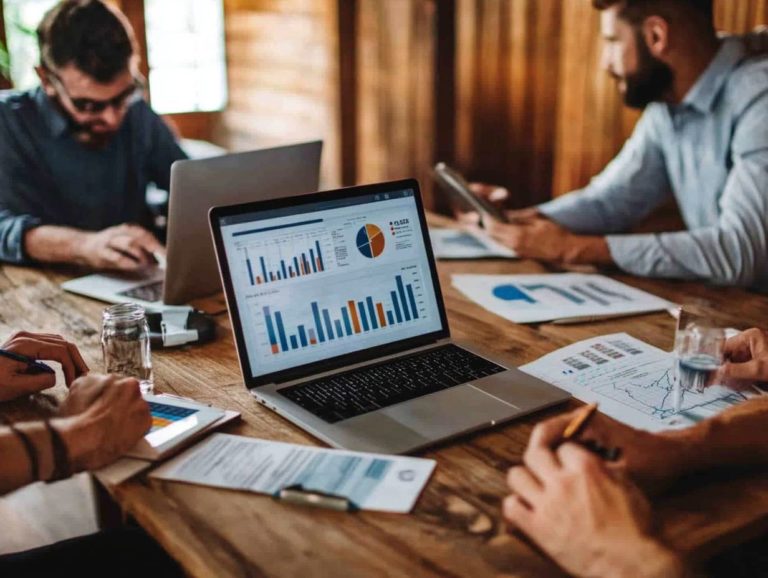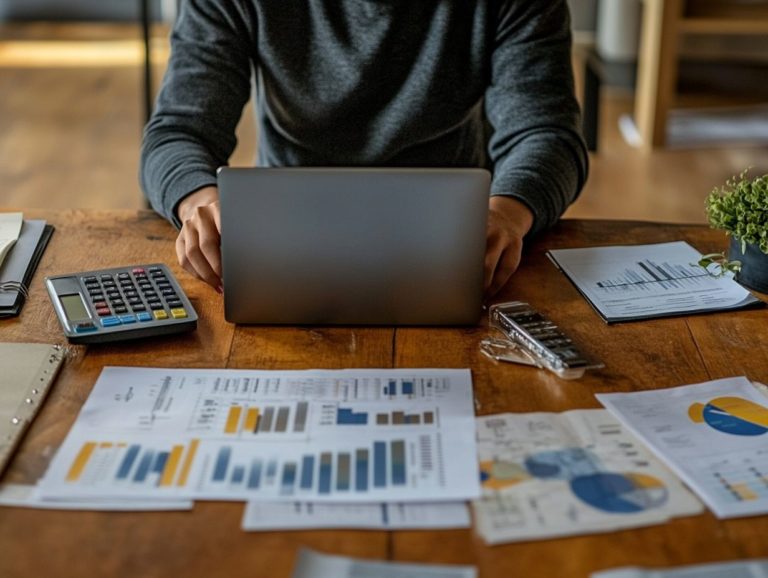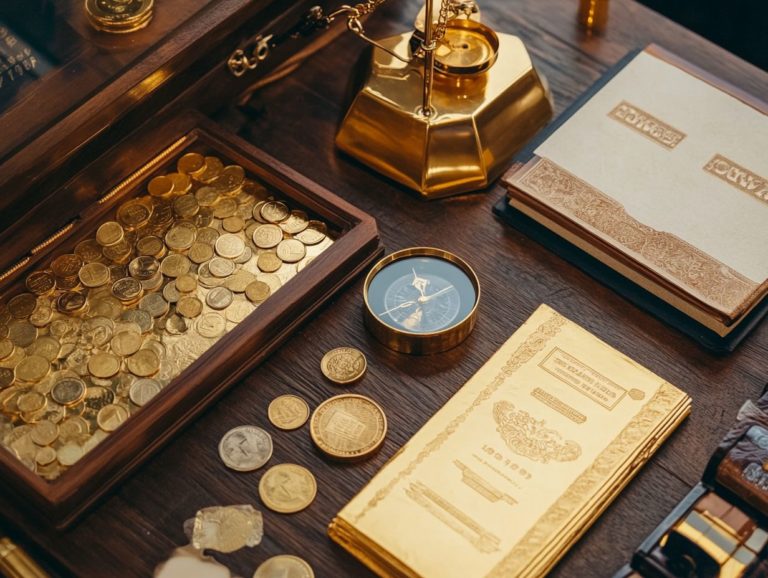How to Build Wealth Through Precious Metals
Precious metals have always represented wealth and stability. They are a favored choice for investors like you who seek to diversify and protect your assets.
This article delves into the various types of precious metals, the factors that influence their value, and the benefits and risks associated with investing in them. You will also discover effective strategies for integrating these valuable assets into your portfolio, secure storage options, and essential measures to safeguard your investments.
Discover how precious metals can enrich your financial strategies and help you build enduring wealth.
Contents
Key Takeaways:
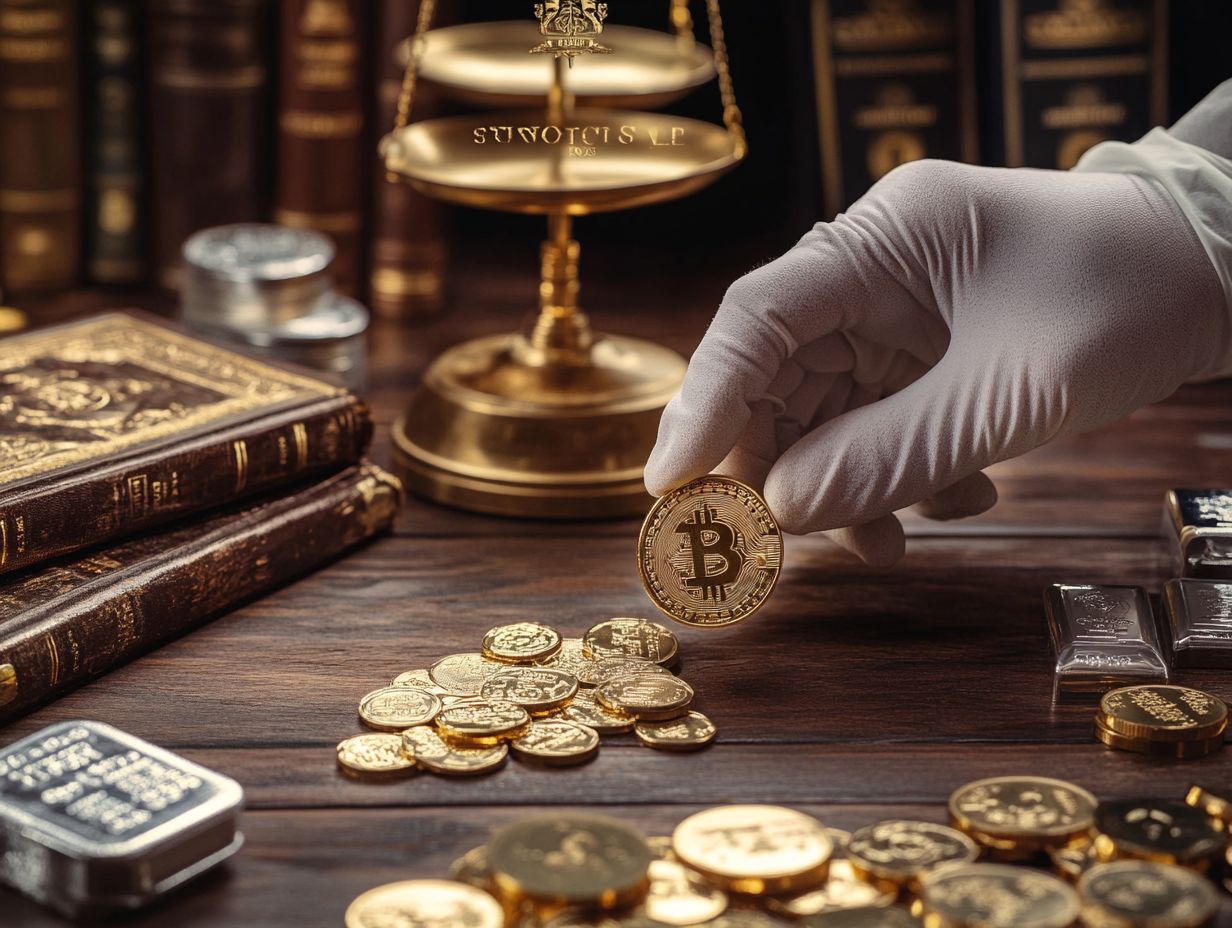
- Diversify your investment portfolio by incorporating a variety of precious metals, such as gold, silver, and platinum.
- Understand the factors that can affect the value of precious metals, such as supply and demand, economic conditions, and geopolitical events.
- Consider the benefits and risks of investing in precious metals, and develop a strategic plan that aligns with your financial goals and risk tolerance.
Understanding Precious Metals
Understanding precious metals is essential for you as a savvy investor. It helps you elevate your portfolio with tangible assets like gold, silver, platinum, and palladium.
These metals have long stood as a refuge during periods of economic uncertainty. Understanding their true worth and industrial applications empowers you to make informed investment decisions.
Types of Precious Metals
The primary types of precious metals to consider are gold, silver, platinum, and palladium. Each metal possesses unique value and investment potential.
Gold and silver have historical roles as currency and are significant in jewelry. Meanwhile, platinum and palladium are gaining traction for their industrial applications, especially in automotive catalysts and electronics.
Gold prices typically hover around the $1,800-per-ounce mark. This makes it a popular choice for investors looking to secure their wealth amidst economic uncertainties.
You might find it appealing to purchase gold in the form of bullion coins or bars. Silver, often referred to as “poor man’s gold,” trades at a lower price but serves similar purposes, making it a popular option for both investors and collectors.
On the other hand, platinum and palladium tend to be more volatile. Their market prices are heavily influenced by demand in the automotive sector, where they play a crucial role in reducing harmful emissions.
You can include each of these precious metals in a precious metal IRA. This offers you the opportunity to diversify your retirement savings while potentially enjoying tax benefits.
Factors Affecting Value
Numerous factors play a crucial role in determining the value of precious metals. These include the dynamics of supply and demand, prevailing economic conditions, and geopolitical influences.
Market volatility often results from shifts in investor sentiment and external events, such as rising inflation or economic uncertainty. This can lead to significant price changes.
For example, during times of political instability, like the financial crisis in 2008, gold prices soared as investors flocked to safer assets. Conversely, when the economy shows signs of recovery, such as in 2021, the demand for precious metals tends to wane, prompting price declines.
As a savvy investor, keep a keen eye on these trends. Examine reports from economic forecasting agencies and monitor central bank policies that influence interest rates.
Stay ahead of the curve by keeping an eye on market trends and economic reports. By staying informed and adaptable, you can better position yourself to capitalize on market shifts, making calculated decisions that align with your financial objectives.
Investing in Precious Metals
Investing in precious metals stands out as a favored strategy among smart investors like yourself. It offers both diversification benefits and a shield against market volatility.
You have a range of investment options, from physical assets like bullion coins and refined metals to investment options such as exchange-traded funds (ETFs) and commodity ETFs.
Each of these avenues provides unique exposure to precious metals, allowing you to tailor your investment approach to align with your financial goals. For instance, learning how to use gold to diversify your portfolio can enhance your strategy.
Benefits and Risks
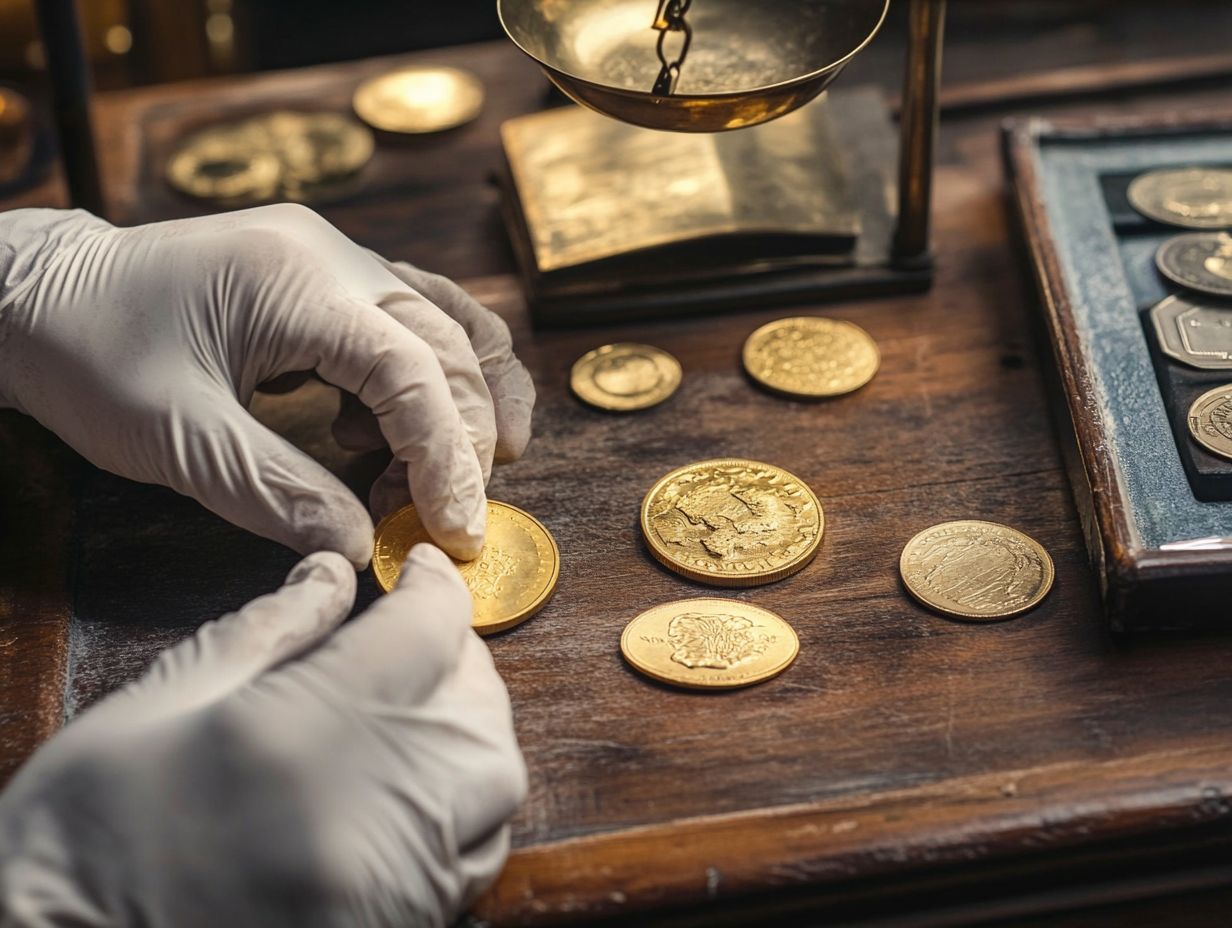
Investing in precious metals offers various benefits. It acts as a hedge against rising inflation and provides protection during turbulent market periods. As a savvy investor, it s crucial for you to be aware of the unique risks involved, such as credit risk and price dynamics, that can impact your investment outcomes.
These assets also have inherent value that resists erosion from market fluctuations. This intrinsic worth often leads investors like you to view them as a stable cornerstone in times of uncertainty.
To effectively incorporate precious metals into your broader investment strategy, start diversifying your portfolio while maintaining liquidity. By carefully weighing the upside potential against the associated risks, you can make informed decisions that align with your financial goals, including how to build a resilient precious metals portfolio, avoiding an overreliance on any single asset class.
Strategies for Investing
Developing effective strategies for investing in precious metals is essential for optimizing your returns and minimizing risks. Smart investors like you often employ various methods, including direct purchases of physical metals, investing in mining stocks, and utilizing investment funds to gain exposure to market trends.
To further enhance your investment approach, consider the balance between active and passive strategies, each offering unique benefits. As an active investor, you ll likely react dynamically to market changes. A passive approach enables you to focus on long-term gains through diversified portfolios.
Incorporating different investment vehicles, such as Exchange-Traded Funds (ETFs) or mutual funds, can help you mitigate risks associated with market volatility.
Understanding the complementarity of these options is crucial. While physical assets provide security during economic downturns, stocks in mining companies may capitalize on market upswings, allowing you to create a robust and resilient portfolio.
Diversifying Your Portfolio with Precious Metals
Diversifying your portfolio with precious metals can yield substantial advantages, especially as a protective measure against economic uncertainty and market fluctuations. By incorporating tangible assets like gold and silver into your investment strategy, you enhance diversification and reinforce the role of precious metals as a reliable safe haven during turbulent times.
Importance of Diversification
The importance of diversification in crafting a sound investment strategy cannot be emphasized enough. By distributing your investments across a variety of asset classes including precious metals you can effectively mitigate the risks tied to market volatility and enhance your potential for long-term value.
Incorporating a range of asset types, such as stocks, bonds, and tangible assets like gold and silver, allows you to create a balanced portfolio that stands a better chance of weathering economic downturns.
Historical case studies illustrate this principle clearly. During the 2008 financial crisis, portfolios enriched with precious metals demonstrated remarkable resilience compared to those heavily skewed towards equities. As gold prices surged, stock values plummeted.
In times of inflation, tangible assets often retain their value. This provides a stabilizing force for your returns and serves as a hedge against economic uncertainties. This strategic allocation minimizes risk and fosters a steady growth trajectory, benefiting you across various economic landscapes.
How to Incorporate Precious Metals
Incorporating precious metals into your investment portfolio gives you various options. You can choose physical assets like gold or silver coins and bars, or financial products such as funds you can buy and sell like stocks and mining stocks.
A precious metal IRA is also a smart choice for adding these assets to your retirement plan. Physical assets offer intrinsic value and security, but consider the storage and insurance costs involved.
Funds provide liquidity and easy trading. However, they may not satisfy those who prefer direct ownership. Mining stocks can be appealing due to their potential for larger gains as metal prices rise, but remember they carry market volatility and operational risks.
By examining these options carefully, you can choose a mix of physical and financial strategies that fit your long-term investment goals.
Storing and Protecting Your Precious Metals
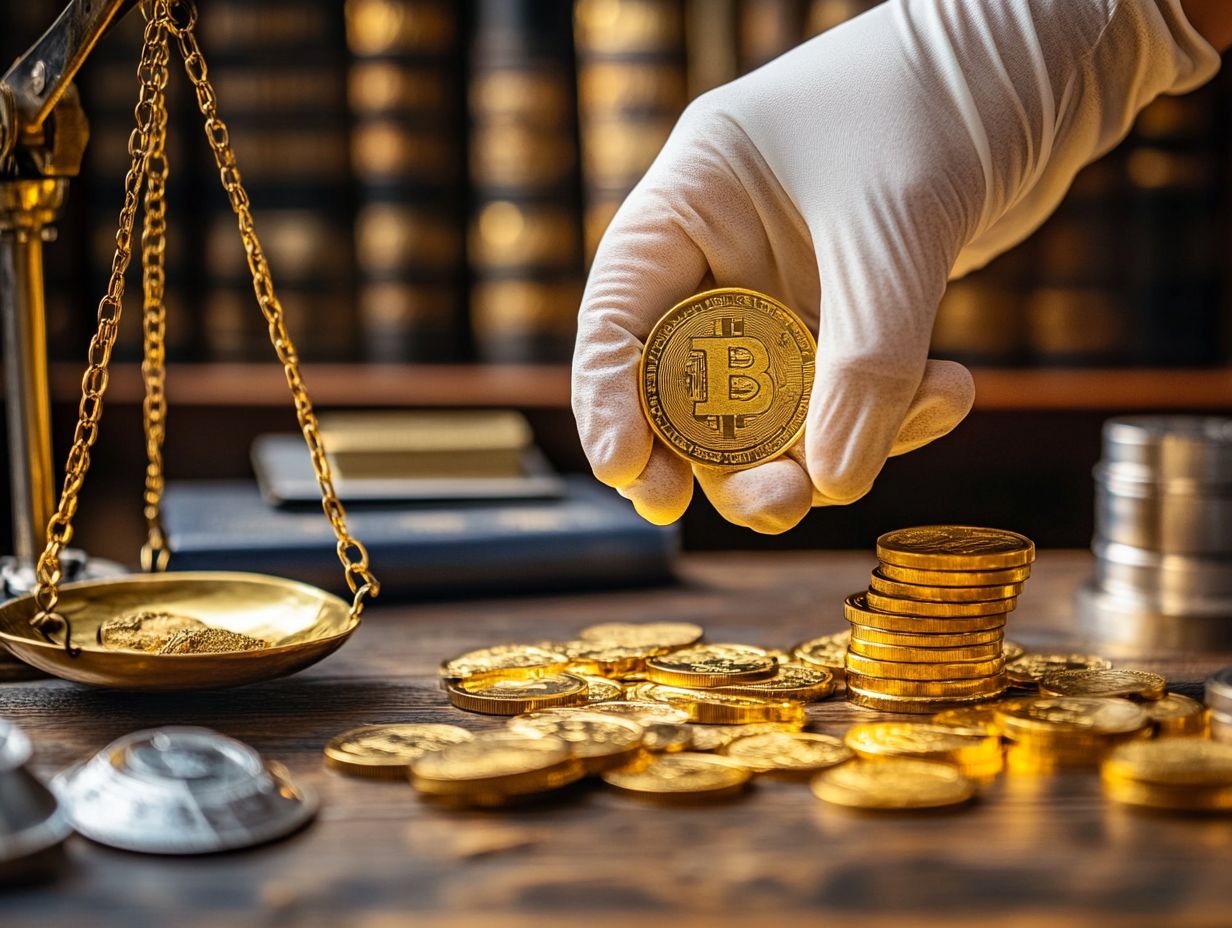
Storing and protecting your precious metals is essential to safeguard your investment. Look into secure options like safety deposit boxes and private vaults, along with appropriate insurance.
These strategies are crucial for managing your physical assets effectively and preserving their value over time.
Secure Storage Options
When it comes to secure storage for your precious metals, consider private vaults and safety deposit boxes. Each option offers different levels of investment security, so choose wisely to protect your assets from theft or damage.
Evaluate the reputation of the storage provider, insurance coverage, and physical security measures they have. For instance, private vaults might have top-notch security and convenience, while bank safety deposit boxes may charge lower fees but have limited access hours.
Balance the initial costs with ongoing fees to ensure the solution fits your budget. Regularly check your storage choices and update security protocols to address evolving threats in asset protection. Your diligence today can lead to significant gains later.
Insurance and Protective Measures
Insurance and protective measures are vital for safeguarding your investment in precious metals. Securing the right insurance and additional strategies ensures that your tangible assets are protected from risks.
Various insurance policies cater to precious metals. They range from comprehensive coverage for theft and natural disasters to specialized plans for rare coins and bullion. This tailored approach not only addresses the unique nature of your assets but also provides peace of mind.
You should also adopt extra protective measures like secure storage and professional appraisals to enhance the safety of your investments. Taking a proactive approach ensures your valuable assets remain protected, allowing you to focus on growing your wealth without worrying about potential loss.
Frequently Asked Questions
Why invest in precious metals?
Precious metals are rare, naturally occurring metals known for their beauty and durability. Examples include gold, silver, platinum, and palladium.
Why Consider Investing in Precious Metals?
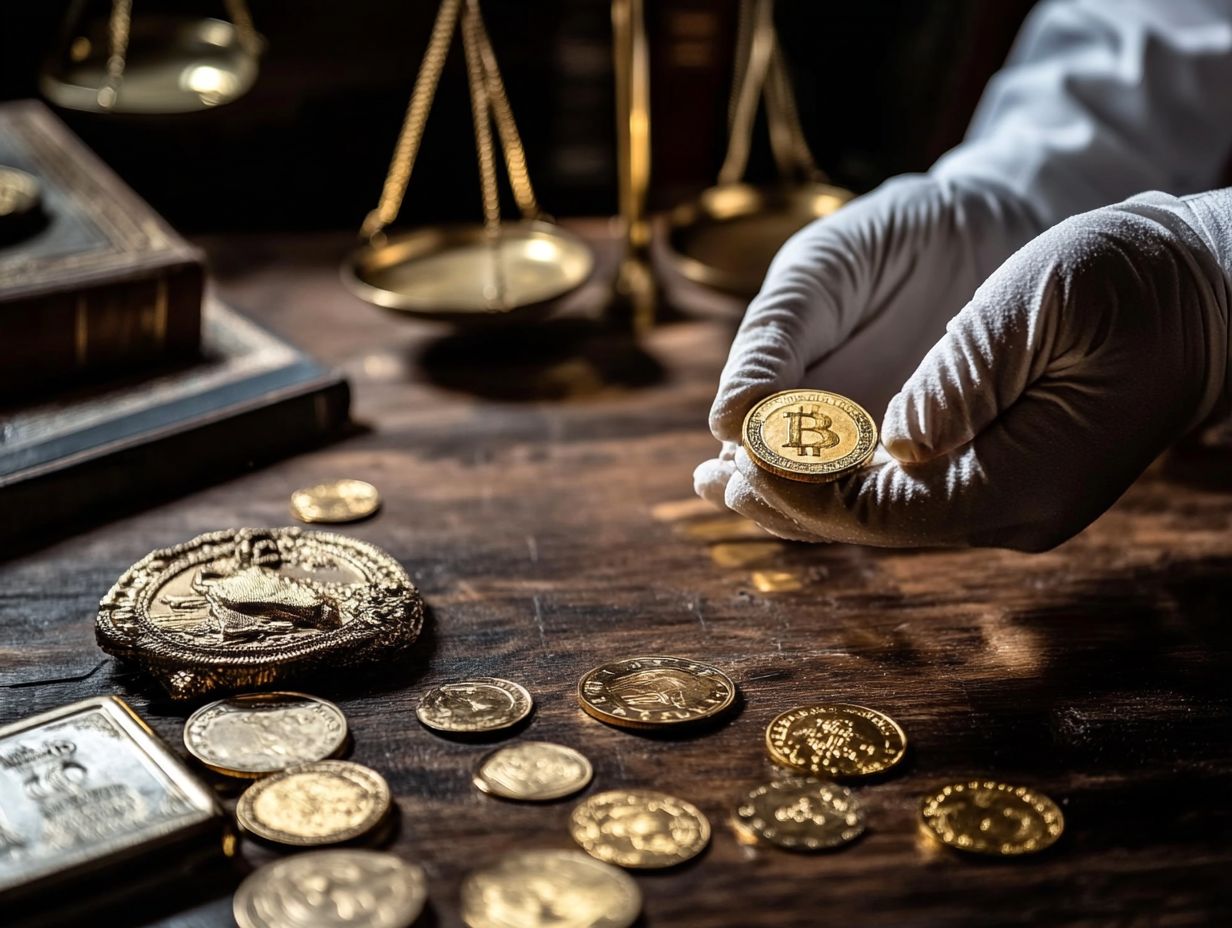
Precious metals are a stable and reliable store of value. They serve as a hedge against inflation and economic downturns, maintaining their purchasing power over time.
How Can I Build Wealth Through Precious Metals?
One way to build wealth is to purchase physical gold or silver in bars or coins. Holding onto them can be a long-term investment.
Another option is to invest in precious metal exchange-traded funds (ETFs) or stocks of companies that mine or produce these metals.
What Are the Risks of Investing in Precious Metals?
Like any investment, investing in precious metals carries risks. These include market volatility, changes in supply and demand, and potential for fraud.
Be sure to research carefully and diversify your portfolio to mitigate these risks.
Are There Any Tax Implications for Investing in Precious Metals?
Tax implications vary based on the country and type of investment. In the United States, for example, gains from selling physical metals are subject to capital gains tax.
ETFs and stocks are taxed as regular investments. Consult with a tax professional for specific advice.
Can I Use Precious Metals as a Form of Currency?
While precious metals have been used as currency historically, they are not commonly used today. However, some countries and businesses still accept gold or silver as payment.
Additionally, there are digital currencies backed by precious metals that can be used for transactions.
Now is the perfect time to consider precious metals for your investment portfolio! Explore your options and consult with a financial advisor to make informed decisions.











